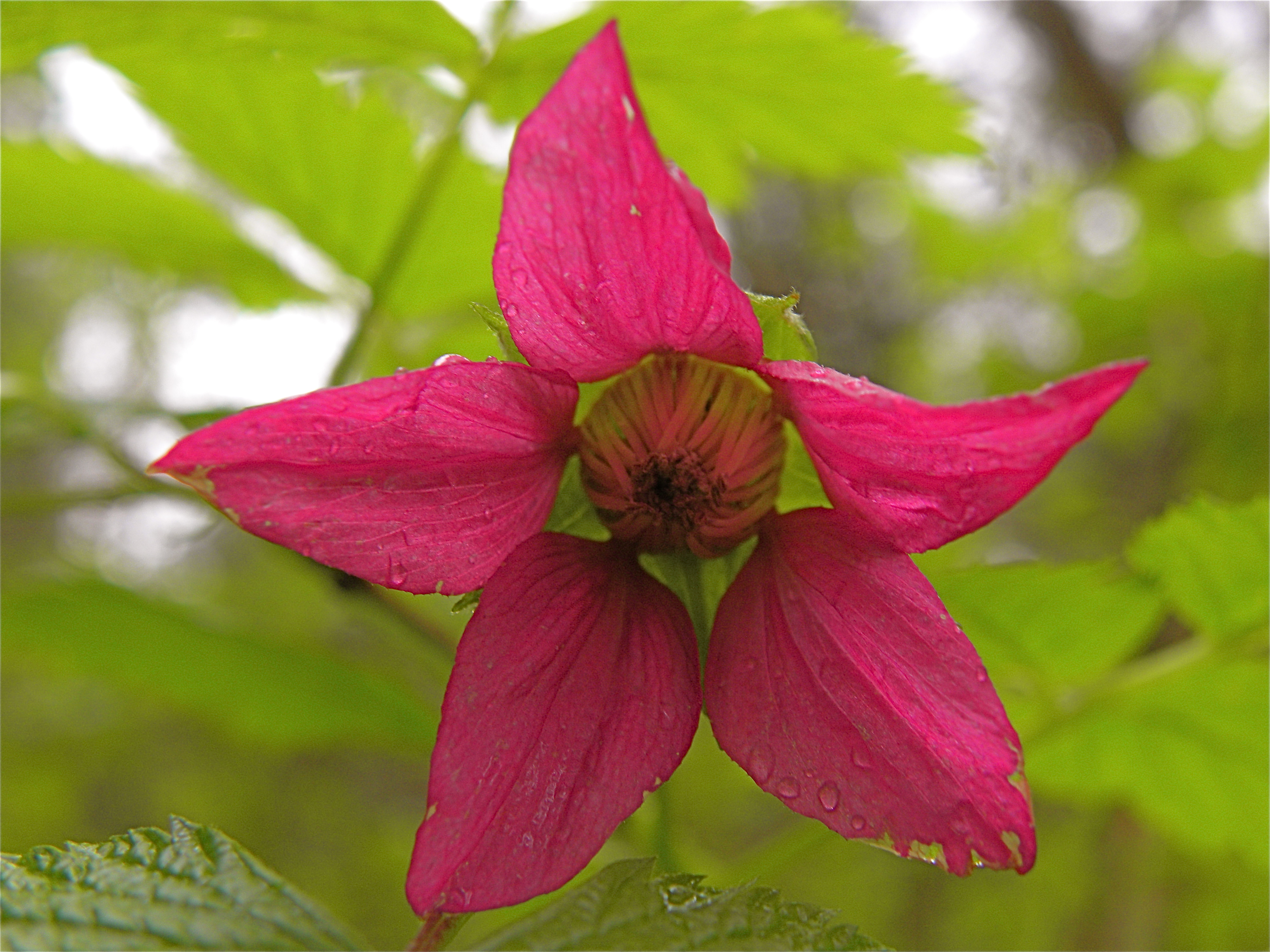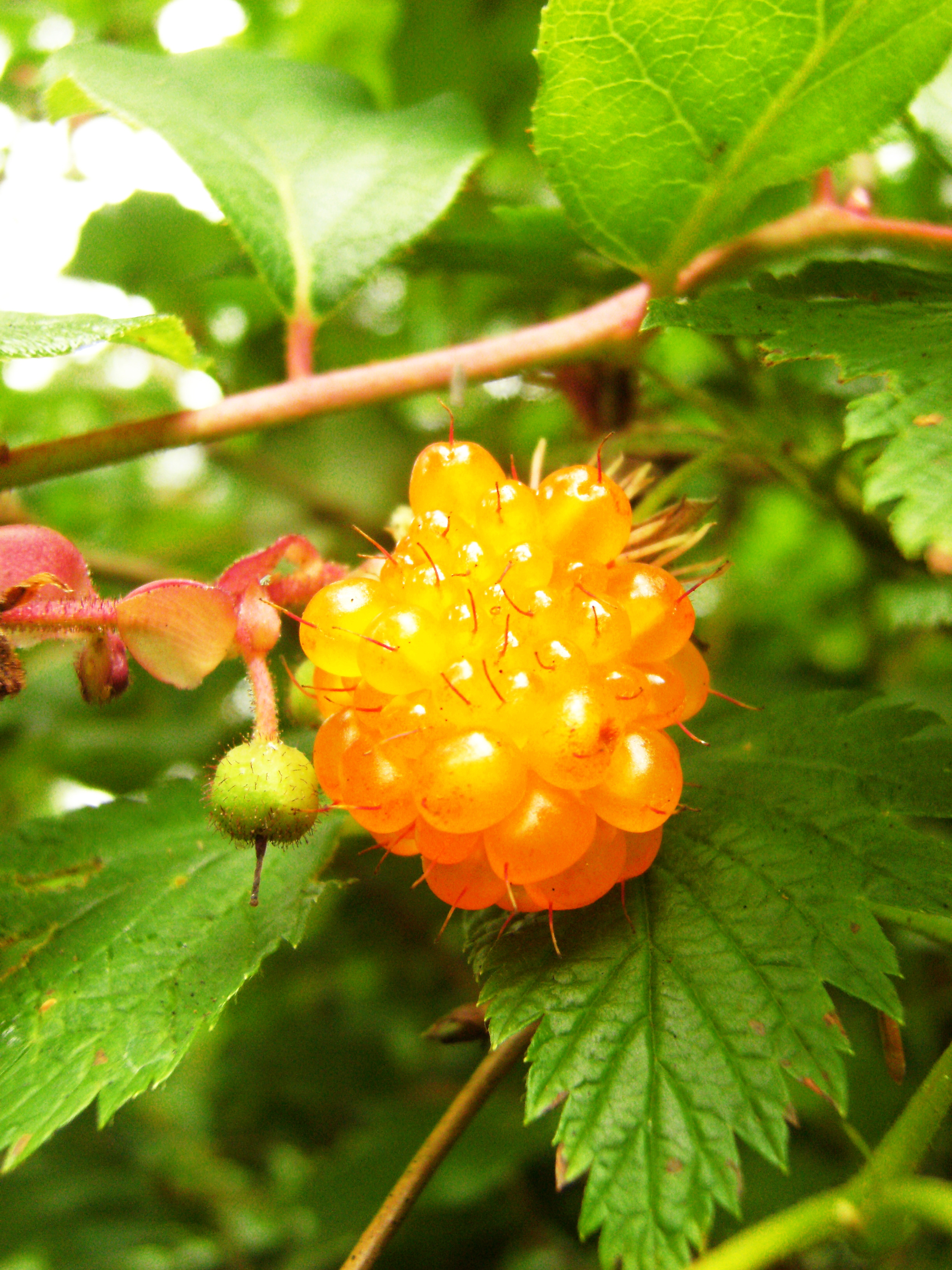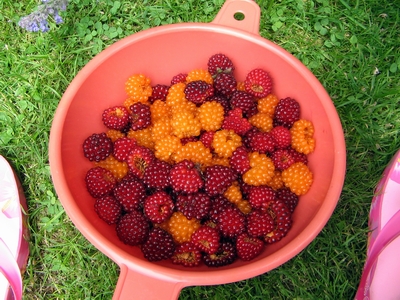Soil composition and ph levels for salmonberry
Soil composition and the pH level are critical components for the growth of salmonberry plants. Salmonberries prefer soils with loam or sandy loam texture; they will also tolerate heavier clay soils if well-drained. ]Soils should have a pH range from 4.0 – 6.8 for optimum growth, with an ideal value of 5.6-6.1 where most nutrients are more available to the plant.
Soils that are too acidic may cause many plant nutrients to be locked to unavailable forms, while Soil pH values outside of these ranges can lead to deficiencies in certain micronutrients such as magnesium and boron needed for salmonberry growth and fruiting.

Watering salmonberry is an important part of keeping the shrubs healthy and blooming during the growing season. Water deeply, but infrequently – at least twice per week – saturating the soil to a depth of 6-12 inches.
Water in the morning to reduce leaf scorch, water-logging, and other issues associated with too much moisture in hot weather. Water the base of each plant rather than spraying from above; this helps reduce foliar diseases.
Salmonberry, like many other berry plants, prefers acidic, moist soil; fertilize in late spring and mid-summer for optimal growth.
Are there flowers in salmonberry?
Yeah, Salmonberry has clusters of small pink-white flowers, which bloom from early to late spring.

Salmonberries
These plants typically grow in dense thickets, and create an impenetrable forest when planted in large groves due to their very tangled vines that can reach heights of up to 10 feet.
Its gorgeous flowers produce delicious salmonberries, ranging from a light golden yellow and bright red color that ripens as spring passes.
The juicy fruits have a sweet taste and tart undertone, similar to a raspberry but with a touch of pineapple-y flavor. While harvesting them isn’t easy—it takes quite some diligence due to the thorns and dense stem of this hardy plant—the results are more than worth it!

Propagation of salmonberry
Propagation of salmonberry is best achieved with cuttings. Propagation techniques vary depending on the size of the stem and the desired growth form. For micro-cuttings, simply take a cutting with two or three leaves and place it in water or growing medium.
Larger branches can be propagated using air-layering, which involves wrapping a moist piece of surrounding moss around the branch to encourage root development. For a bushier habit, train new shoots to become horizontal by securing them in position with soft plant ties.
Propagation through division is also possible during winter dormancy, when established plants are easier to separate into clusters. Propagation by seed is more difficult, since germination rates are low in typical environmental conditions.
Regardless of method, it’s essential to monitor progress and keep cuttings consistently moist for successful propagation of salmonberry.

Pests and diseases in salmonberry
Pests and diseases can be major concerns for salmonberry growers, as they can rapidly reduce both the quantity of fruit and the overall health of the crop.
Pests commonly associated with this berry are spotted wing drosophila, aphids and whiteflies, whereas common diseases include powdery mildew, leaf blight and bacterial blight.
Taking preventative measures against pests and diseases is essential in order to maximize the growth potential of salmonberry plants. This includes avoiding overcrowding, controlling weeds, irrigating properly and applying certified fungicides.
By keeping up with regular monitoring and taking precautionary steps early on, growers can help to protect their crops from damaging pest or disease outbreaks.
Irritation to pets from salmonberry
Irritation to pets from salmonberry is a serious issue that needs to be addressed. This can manifest in many different forms, ranging from excessive drooling, rashes, or swelling of the face and mouth after eating salmonberry.
Owners need to be aware that their pet could experience irritation from consuming this plant and should avoid it where possible. If there are any signs of irritation after consuming salmonberry, owners should consult with their veterinarian for treatment.

Varieties of salmonberry
Varieties of salmonberry exist in several parts of the world. In North America, five varieties have been identified: Rubus spectabilis (coastal Pacific Northwest), R. Ursinus (California and Oregon), R. parviflorus (British Columbia to Alaska), R. pedatus (Washington and British Columbia) and R. chamaemorus or Arctic bramble (various locations across North America).
In Europe, a single species, R. arcadicus, can be found in Scotland, England, Spain and other countries near the mountainous region. All varieties are similar in appearance with drooping clusters of white to pink flowers that give way to reddish-orange fruit during summertime months.
Varieties differ slightly in taste, texture and acidity levels when ripened for consumption.

Growing salmonberry in containers and pots
Growing salmonberry in containers and pots is quite possible, although some special consideraton should be taken. Start with a high quality potting soil or a mixture of potting soil and thick organic matter like sphagnum moss.
Make sure that the container has ample drainage holes and if it does not, make more. Water generously once per week and fertilize the plant every two weeks during the growing season.
Salmonberries love direct sunlight, so choice of container will also depend on how much it get exposed to sunshine. Growing salmonberry in containers and pots is possible when the right steps have been taken to create an environment conducive to its growth.

Caring for salmonberry
Caring for a salmonberry requires particular attention to its location and soil quality. When planting, ensure the area receives ample sunlight exposure as salmonberry thrives in full sun.
The soil should also be nutrient-rich with low acidity, so consider amending soil if current soil quality is found to be inadequate. Additionally, it is recommended to add fertilizer each spring and water regularly during dry periods.
Lastly, prune salmonberry annually in late winter or early spring to encourage healthy growth and new flower buds. Caring for a salmonberry correctly will help it to thrive over many years.
Companion plants for salmonberry
Companion plants for salmonberry are essential elements of a healthy garden and can provide multiple rewards.
Companion plants help to maximize the health benefits of salmonberry bushes by increasing biodiversity, aiding pollinators, suppressing weeds, and creating microclimates. Companion plants may also add another layer of texture and color to any garden design; blueberries, American hazelnut, and oxeye daisy are all excellent choices which pair beautifully with a salmonberry bush.

Planting and spacing for salmonberry
Planting salmonberry bushes is an excellent way to add a variety of color and texture to any garden. Plant in moist, well-draining soil, spacing each shrub at least 3 feet apart in either full shade or partial sun for best performance.
Planting in the fall before winter arrives is ideal, but with high success rates salmonberries can still thrive when planted in spring. Planting in groups leads to better growth and earlier blooms.
Make sure to prepare the soil adequately by adding organic matter such as peat moss, compost, or aged manure before planting to ensure thriving salmonberry plants.
Best planting time for salmonberry
Salmonberry plants thrive best when planted between late winter and early spring. Planting should occur just prior to the last frost for a successful crop in the following season.
The soil should be moderately moist, fertilized and well-drained prior to planting, allowing for better root growth and development. Space plants 3-4 feet apart and mulch 2-3 inches deep to keep weeds away and conserve moisture.
Salmonberry is an excellent addition to any organic garden, producing tasty fruit with minimum maintenance. Best time to plant is key to its success!

Benefits of salmonberry
Salmonberry is a superfood packed with many essential vitamins, minerals and antioxidants that promote overall health. Its rich nutritional content includes omega-3 fatty acids, folate, magnesium, phosphorous, manganese, fiber, and vitamins A and C.
Studies show that regular consumption of salmonberry can reduce oxidative stress while helping maintain healthy cholesterol levels. It also has anti-inflammatory benefits and can provide relief from chronic illnesses like asthma and arthritis.
This delicious berry has been shown to improve heart health by lowering blood pressure, reducing triglyceride levels, and accelerating weight loss.
From fighting inflammation to improving cardiovascular health, adding salmonberry to your diet is an easy way to enjoy a range of amazing health benefits.

How long to grow salmonberry?
Salmonberry is a delicious, sweet berry closely related to the raspberry and blackberry. It can be enjoyed either in raw form or be cooked into jams, pies, beverages and more.
How long does it take to grow salmonberry? In areas with mild winters – such as the Pacific Northwest where it is most commonly found – one year is usually sufficient for a full crop of salmonberries, though there may be slight variations depending on location.
Salmonberries require sun exposure and should be planted as soon as possible after acquisition from a nursery or seed producer.
Generally, these berries reach maturity in early spring and will continue producing throughout mid-summer before beginning to die back in the late summer months.
How to get rid of Salmonberry bushes?
Salmonberry bushes, which can be found along the Pacific coast, are extremely versatile and require little maintenance. Unfortunately, these same qualities make them difficult to eradicate once they become a nuisance.
The best way to get rid of Salmonberry bushes is to dig up the entire root system using shovels and other digging tools, or by using herbicides that specifically target earth-type plants.
Physical removal is tedious but effective in preventing regrowth; however, if chemical removal is preferred, appropriate herbicides should be used following all safety instructions provided on the label.

Common Salmonberry recipe
Common Salmonberry recipes typically involve lightly frying the berries in butter with a sprinkling of sugar and spices. This helps to bring out the tartness of the berries, creating a delicious flavor.
Common salmonberry recipes are often served with ice cream or cream cheese on top providing an indulgent after-dinner treat. To get the most out of your Common Salmonberry, it is best to allow them to fully ripen before harvesting them and use them within a few days of picking as they do not keep well.
However, Common Salmonberries can be frozen or dried for longer storage when needed.

Which zone does Salmonberry plants grow?
Salmonberry plants are hardy shrubs that can be found in many parts of the western United States and Canada. These plants typically grow in USDA planting zones 5 through 9, although they can thrive in some cooler climates down to zone 4 and warmer places up to zone 10.
They grow best in open forests or lightly shaded areas with good drainage, such as on the edges of streams or along roads and railroad tracks.
Conditions like these can be found across most of their growing range, which makes them an excellent choice for landscaping and habitat restoration projects.


